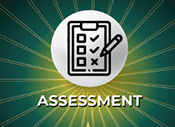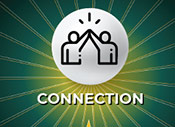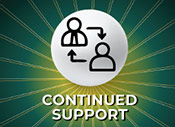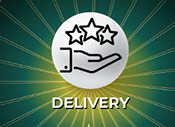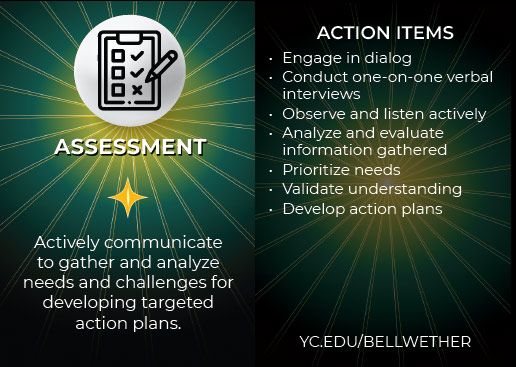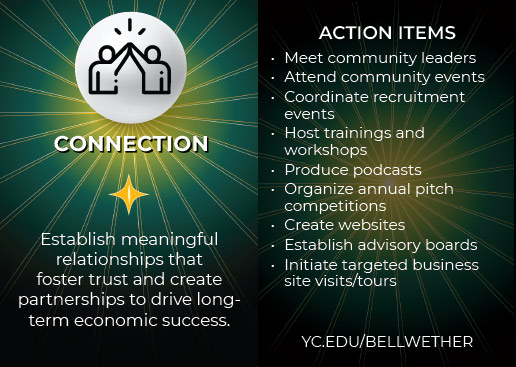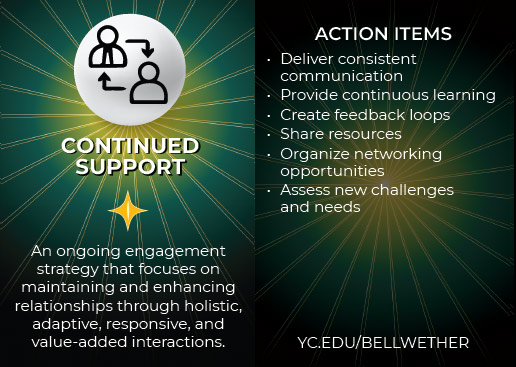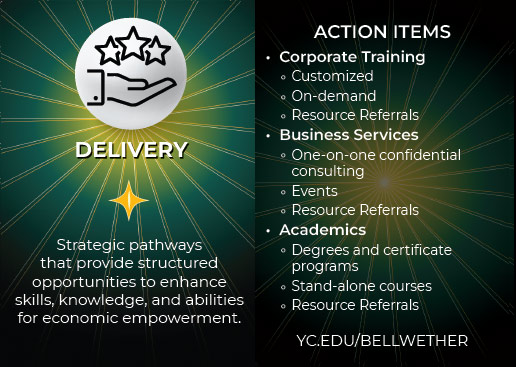- Innovative Service Model - digital binder
- Presentation Slide Deck - pdf
Four Pillars of Economic Empowerment
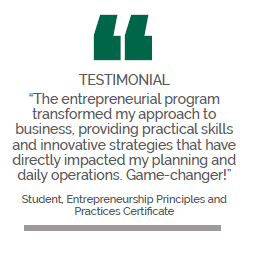
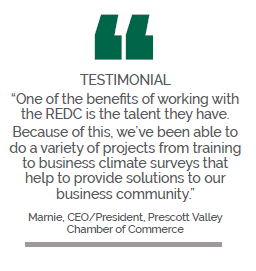
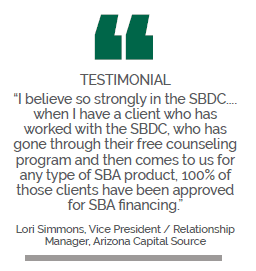
How did you come up with the Innovative Service Model?
As our three departments, Business Services, Corporate Training, and Academics, began working more closely together, it became clear that more intentional communication and resource referral between programs would only strengthen our services and increase impact.
How do you suggest implementing this in an urban setting?
The Innovative Service Model can be replicated in any setting because of its very approachable strategy. The four pillars of Connection, Assessment, Delivery, and Continued Support offer any institution an easy way to build strength and resilience across programs.
What challenges have you experienced?
One challenge has been in showcasing the economic impact data in a meaningful way across departments. Each of the distinct service areas tracks different metrics and in different ways. It has become clear, however, there can be relationships between the numbers and it's important to showcase them distinctly and discuss and share how they may also relate.
What is the most important lesson learned?
The Innovative Service Model is not linear nor is it a step-by-step process. This can be challenging for some people and institutions that are used to having a playbook for implementation. It's important to embrace the discomfort in a more organic system and the organic approach because that's what often leads to true innovation.
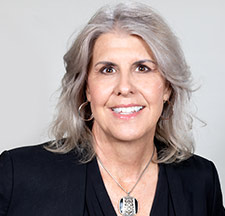
Lauri L. Dreher
School of Business Department Chair BS in Business, Co-Director AAS Management, Director

Ruth Ellen Elinski
Director, Small Business Development Center

Karen A. Jones
Director, Regional Economic Development Center

